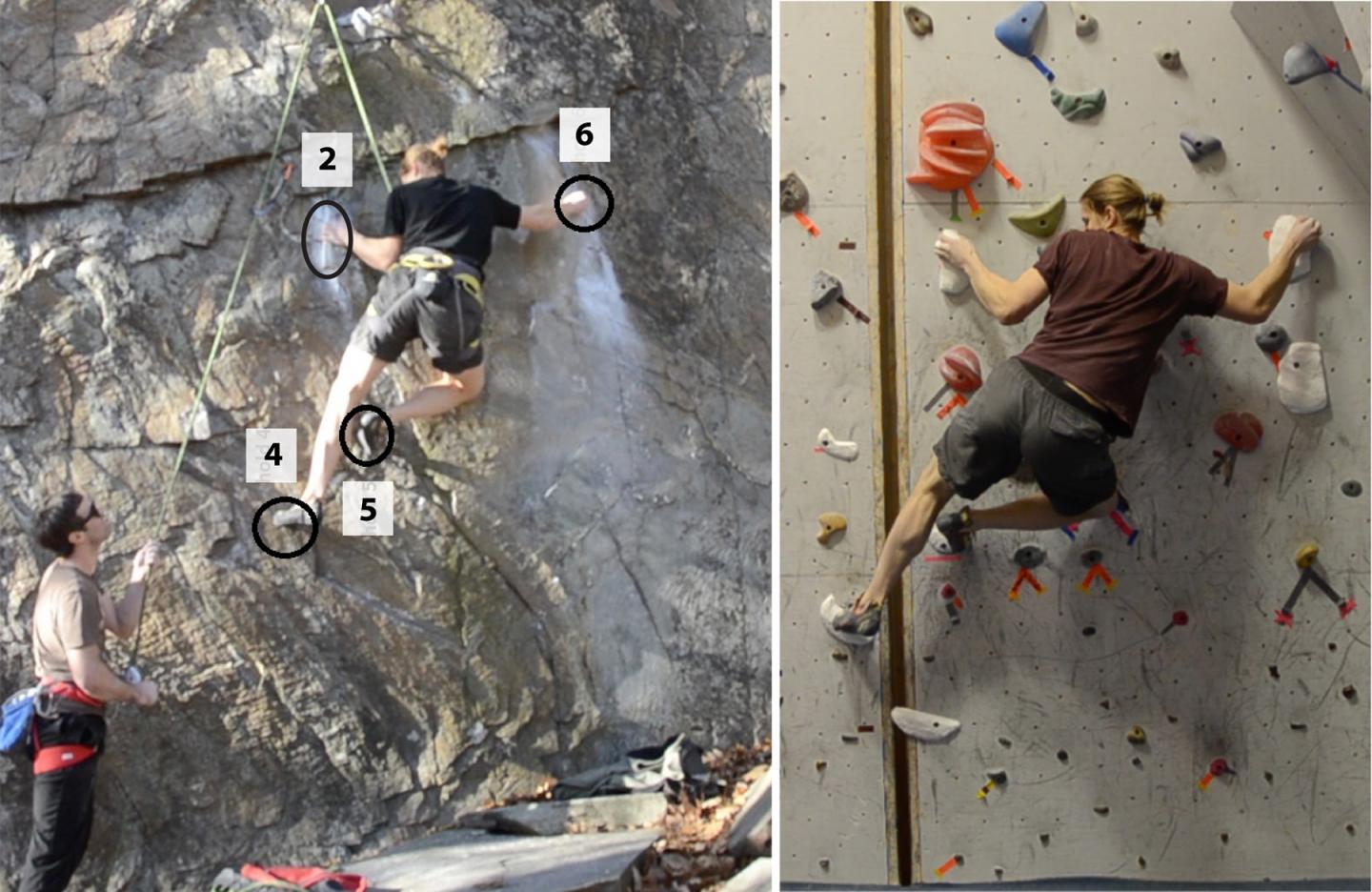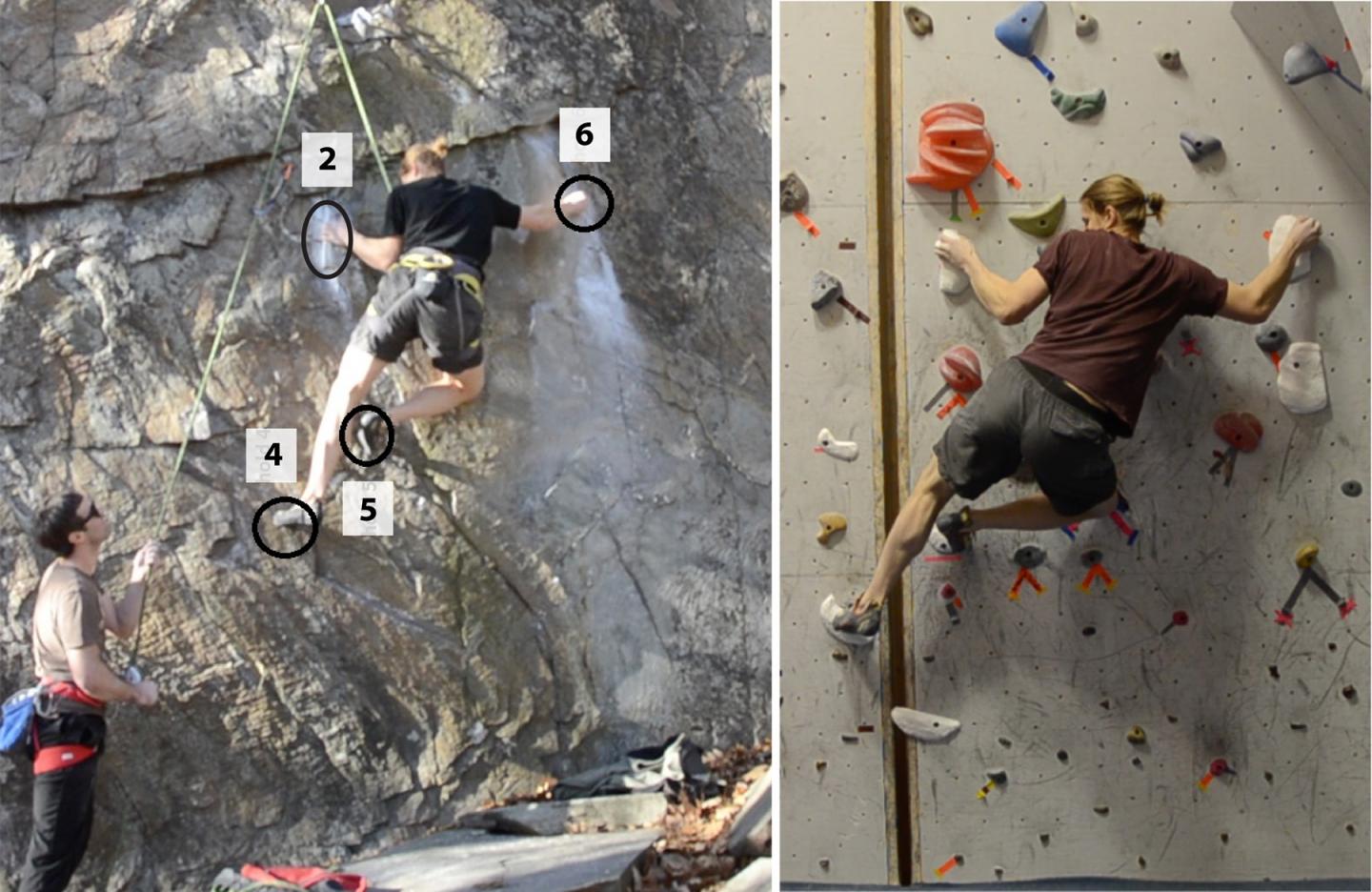
Credit: Images provided by the study's co-authors.
Through a combination of 3-D modeling, digital fabrication and other techniques, a Dartmouth-led research team has replicated sections of popular, outdoor rock climbing routes on an indoor climbing wall. The study demonstrates how these technologies can be used strategically to reproduce large-scale environments by considering how users interact with such sites. Here is the video about the study, which may be the first of its kind.
The research will be presented on May 9 at the 35th Annual ACM CHI Conference on Human Factors in Computing Systems in Denver, Colo., and will be published as part of the conference proceedings.
The research team reconstructed the most challenging sections or "cruxes" of two expert climbing sites outside, New Hampshire's "Things As They Are Now (TATAN)" and Utah's "Pilgrimage," on a climbing wall indoors. Both sites have a difficulty rating of 5.12a. The study focused on the key rock features in each crux that the climber used for the ascent, as fabricating an entire crux would be cost prohibitive.
To replicate the climbing routes indoors, the team created 3D reconstructions of the rock walls using multi-view stereo. They also shot reference video of the climber's ascent to capture where he supported his body and to estimate his skeletal poses, including the contact regions for his hands and feet on the rock wall. This information was critical to isolating the rock wall's geometry, which informed the shapes of the holds and where they would need to be fastened later on the indoor wall.
Once the routes, rock features and climbing holds were 3D modeled, the team used rapid prototyping, and molding and casting techniques, to create climbing holds similar to those found at indoor climbing gyms. The holds are first fabricated out of foam using a CNC router, which naturally has a gritty texture; then the final hold is cast with high strength resin.
The study compared climbers' moves on the indoor replicas to those outdoors and found a close visual match between the climbers' poses on the original and replication. The climbers agreed that the movement felt similar and indicated that they liked the idea of climbing a replica of a route that was located nearly 2,000 miles away.
"We're bridging between large-scale and small-scale fabrication. By fabricating only key pieces of the rock face, we're able to recreate outdoor environments without the need for oversized gantries or other non-standard manufacturing equipment," says lead author and rock climbing enthusiast, Emily Whiting, an assistant professor of computer science at Dartmouth College. Whiting and co-author Ladislav Kavan, an assistant professor at the University of Utah, used to climb together when they were postdocs at ETH Zurich. "Since there's limited time and accessibility at remote climbing locations, the ability to train at a convenient indoor gym can make the difference between success and failure," adds Whiting.
Outdoor climbing routes have long served as a natural source of inspiration for creating training tools for the climbing community. For example, the "campus board," an inclined board with thin horizontal slats, which was invented by Wolfgang Güllich in 1988, continues to be found in many indoor climbing gyms today. It is credited with enabling some of the best climbers to help train for some of the toughest terrain in the world. In like manner, replicas of outdoor routes using fabricated holds have the potential to provide climbers with invaluable site-specific training.
The team hopes that their work inspires future research in environment-scale fabrication as well as related scientific and technological questions, including measuring and replicating friction properties of natural materials, and studying the biomechanics of human locomotion in challenging conditions.
###
Whiting is available for comment at: [email protected]
The other co-authors include: Nada Ouf at the University of Pennsylvania; Liane Makatura and Christos Mousas at Dartmouth, Zhenyu Shu at Ningbo Institute of Technology at Zhejiang University; and Ladislav Kavan at the University of Utah.
Media Contact
Amy D. Olson
[email protected]
603-646-3274
@dartmouth
http://www.dartmouth.edu





